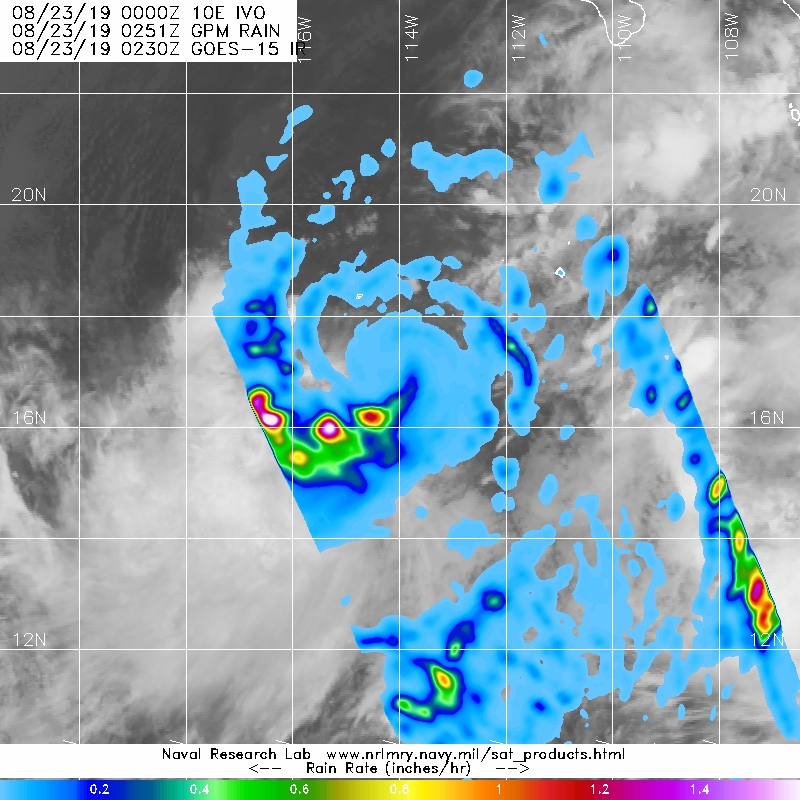Aug. 23, 2019 – GPM Finds Heavy Rain Occurring in a Weaker Tropical Storm Ivo
Tropical Storm Ivo may have weakened in the overnight hours from Aug. 22 to Aug. 23, but the Global Precipitation Measurement mission or GPM core satellite has found that the storm is still generating heavy rainfall over the Eastern Pacific Ocean.

As Ivo was moving toward Mexico’s Clarion Island, the GPM satellite passed overhead and analyzed the rain rates throughout the storm on Aug. 22 at 10:51 p.m. EDT (0251 UTC, Aug. 23). GPM found the heaviest rainfall was occurring in a fragmented band of thunderstorms west of the center of circulation where it was falling at a rate of 40 mm (about 1.6 inch) per hour. GPM is a joint mission between NASA and the Japan Aerospace Exploration Agency, JAXA.
At 5 a.m. EDT (0900 UTC), the center of Tropical Storm Ivo was located near latitude 17.9 degrees n and longitude 114.5 degrees west. That puts the center about 455 miles (735 km) southwest of the southernmost tip of Baja California, Mexico. The National Hurricane Center or NHC said that Ivo is moving toward the north-northwest near 10 mph (17 kph), and this general motion is expected to continue for the next 2 to 3 days.
Maximum sustained winds are near 60 mph (95 kph) with higher gusts. The estimated minimum central pressure is 996 millibars.
NHC noted, “Little change in intensity is expected today, but Ivo should begin to weaken on Saturday [August 24].”
For updated forecasts, visit: www.nhc.noaa.gov.
Rob Gutro
NASA’s Goddard Space Flight Center, Greenbelt, Md.


